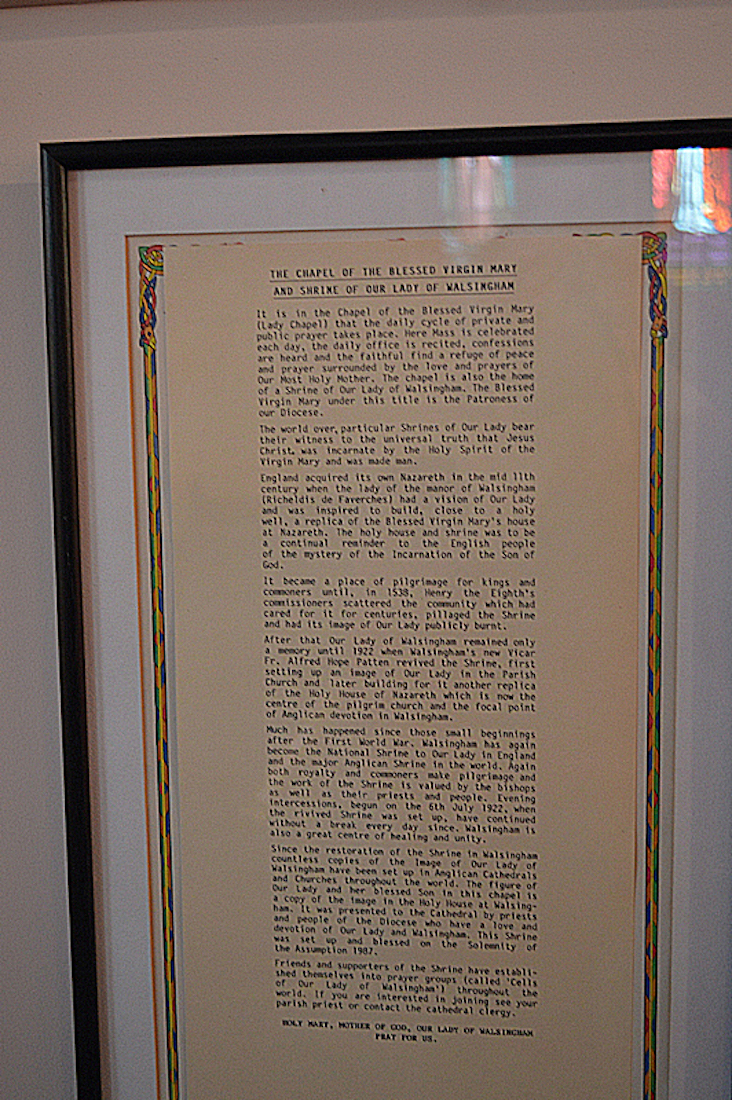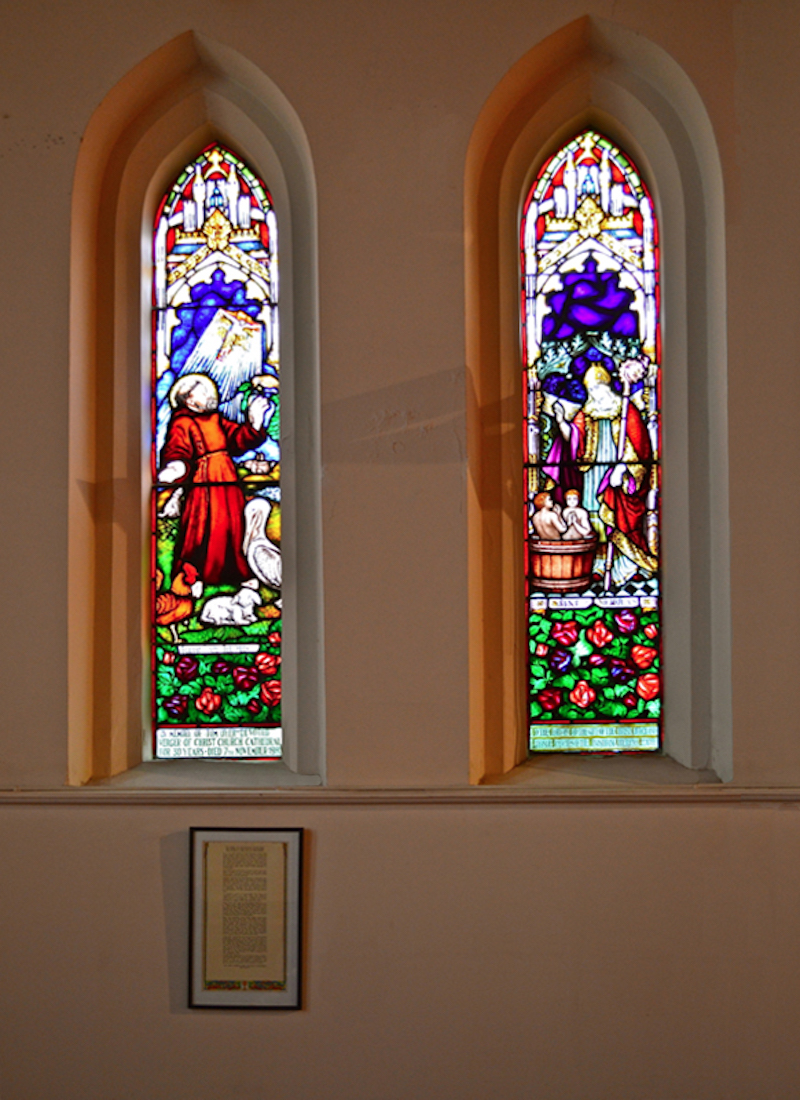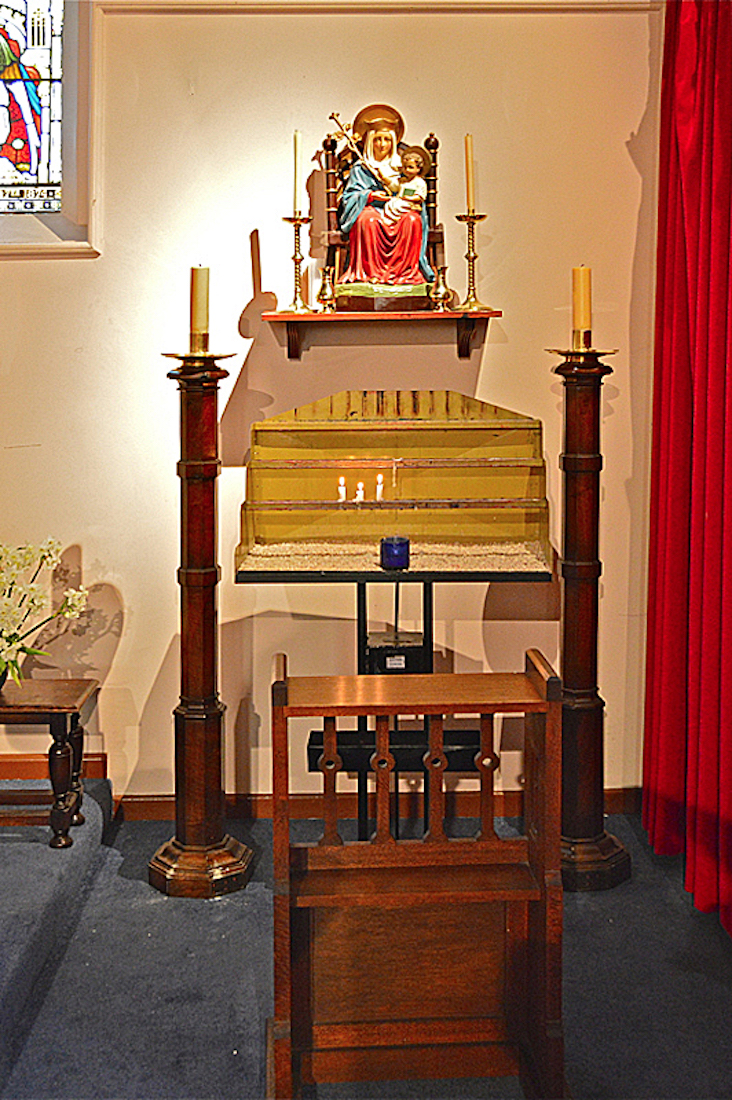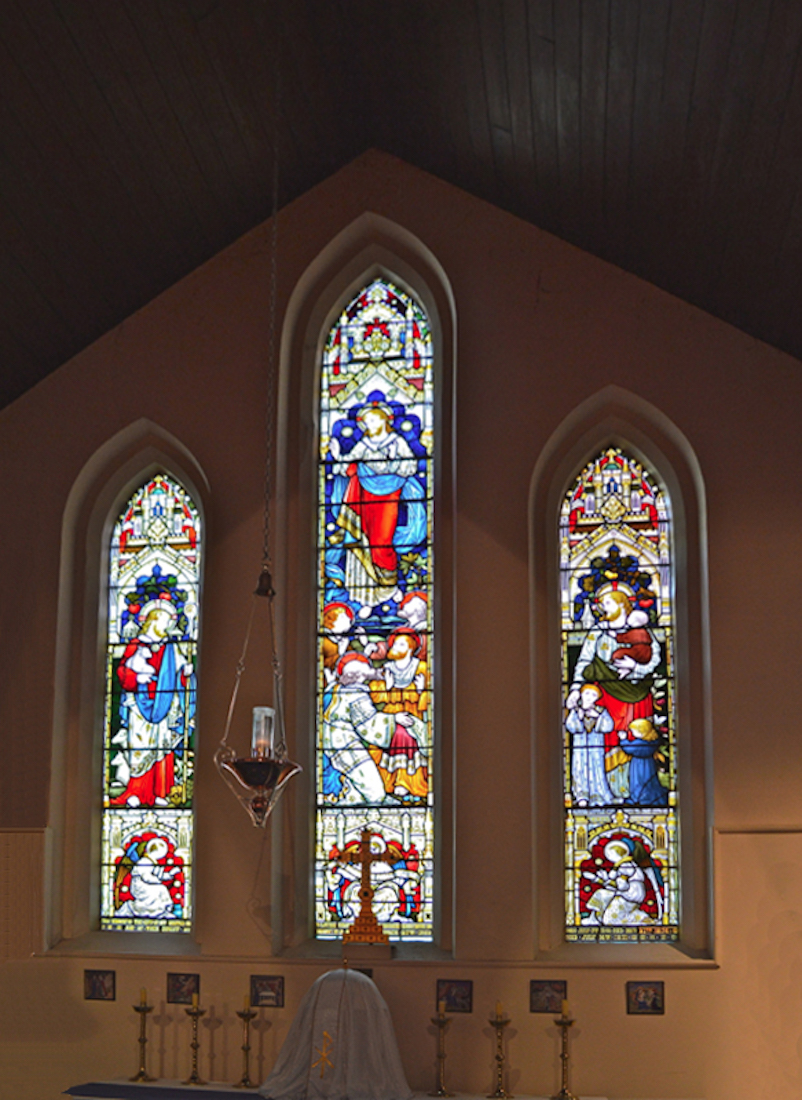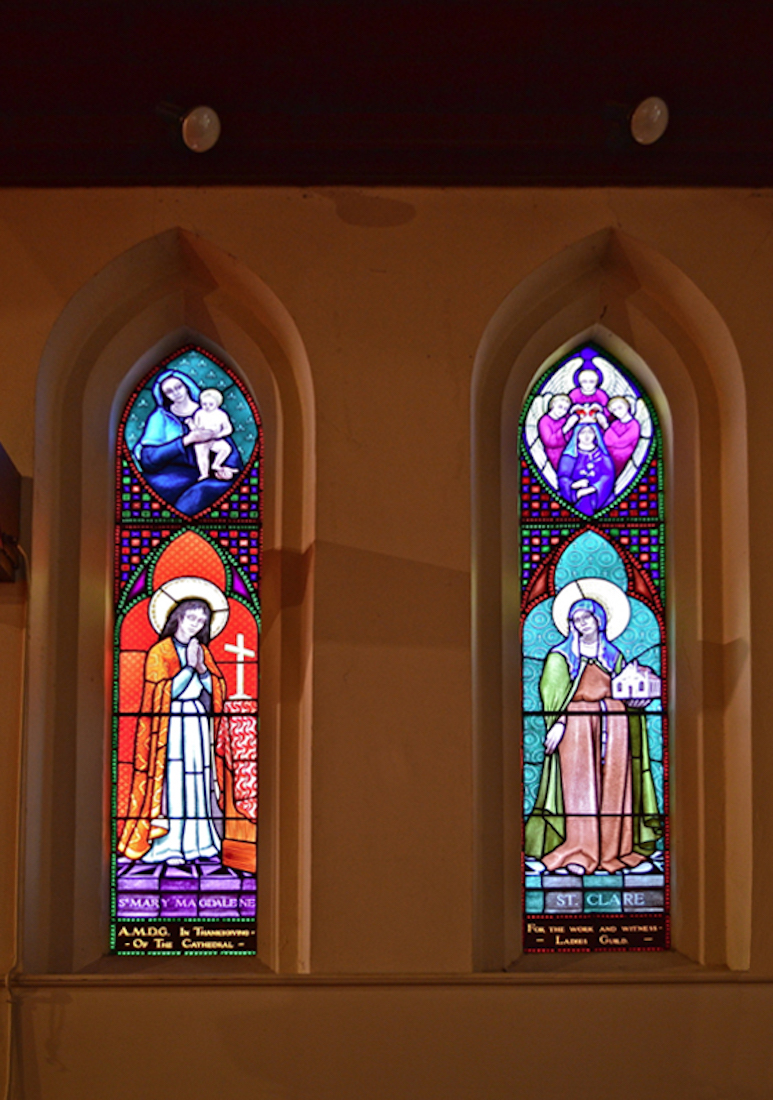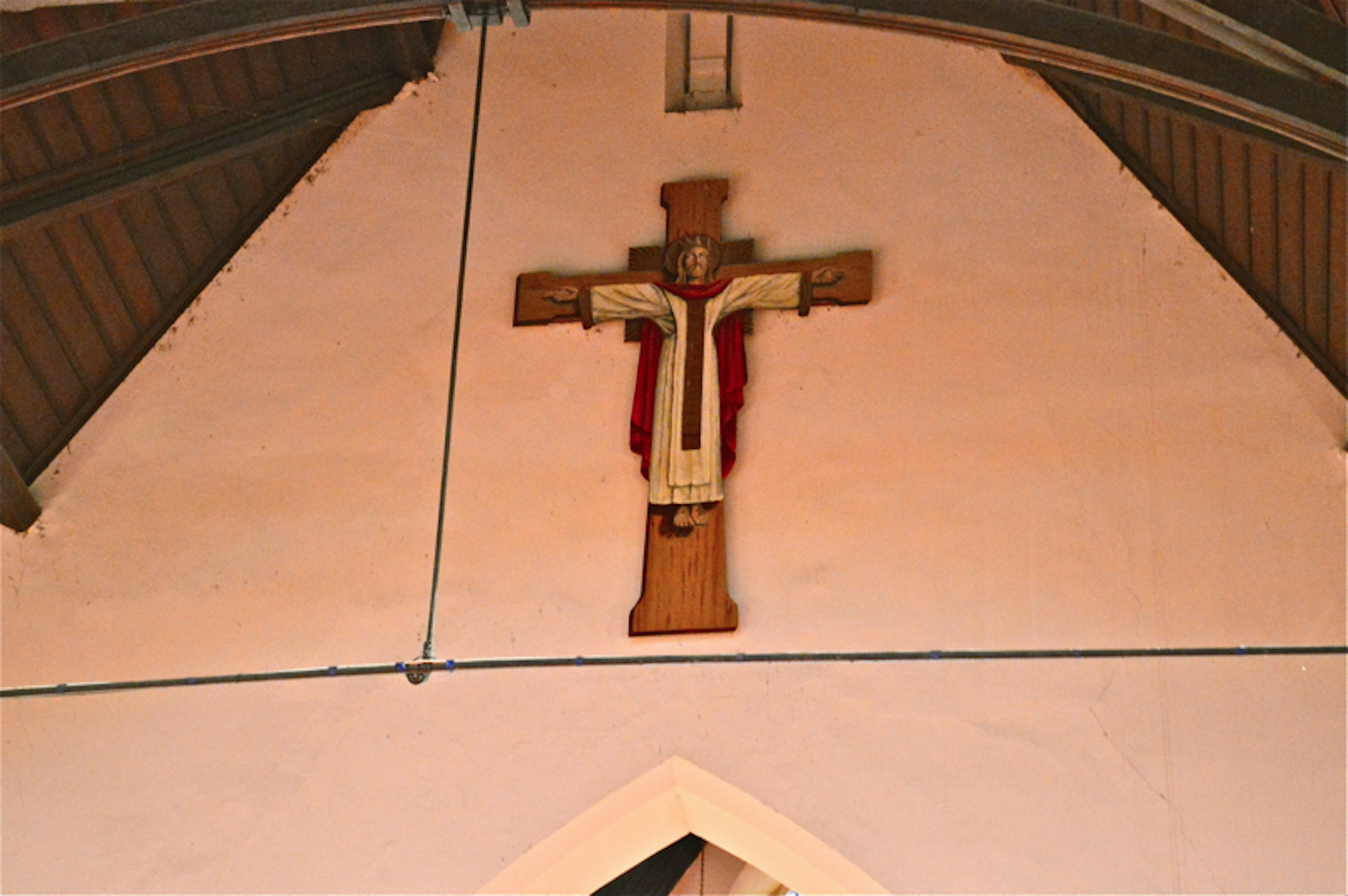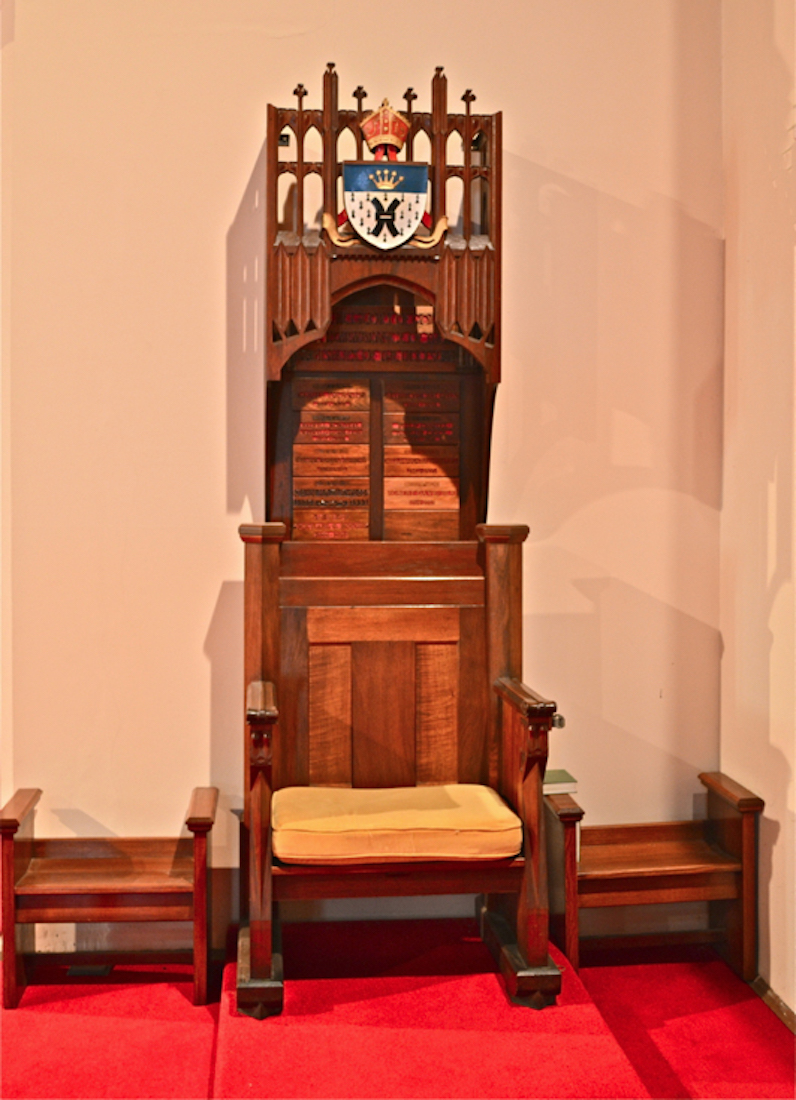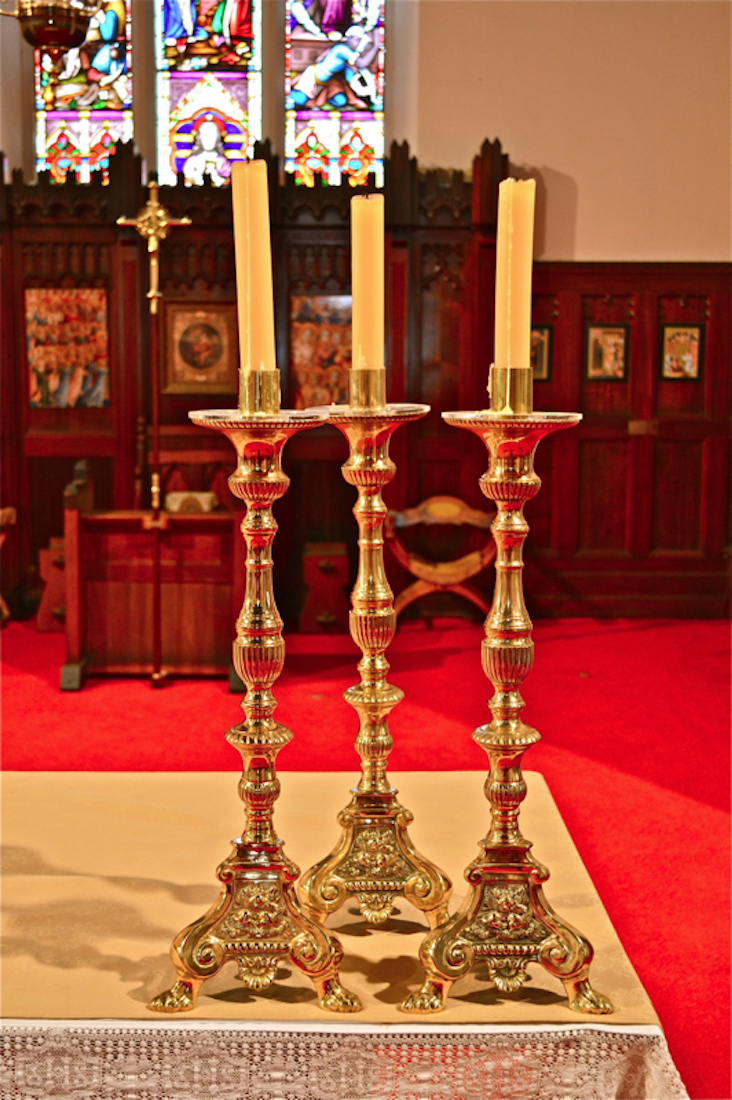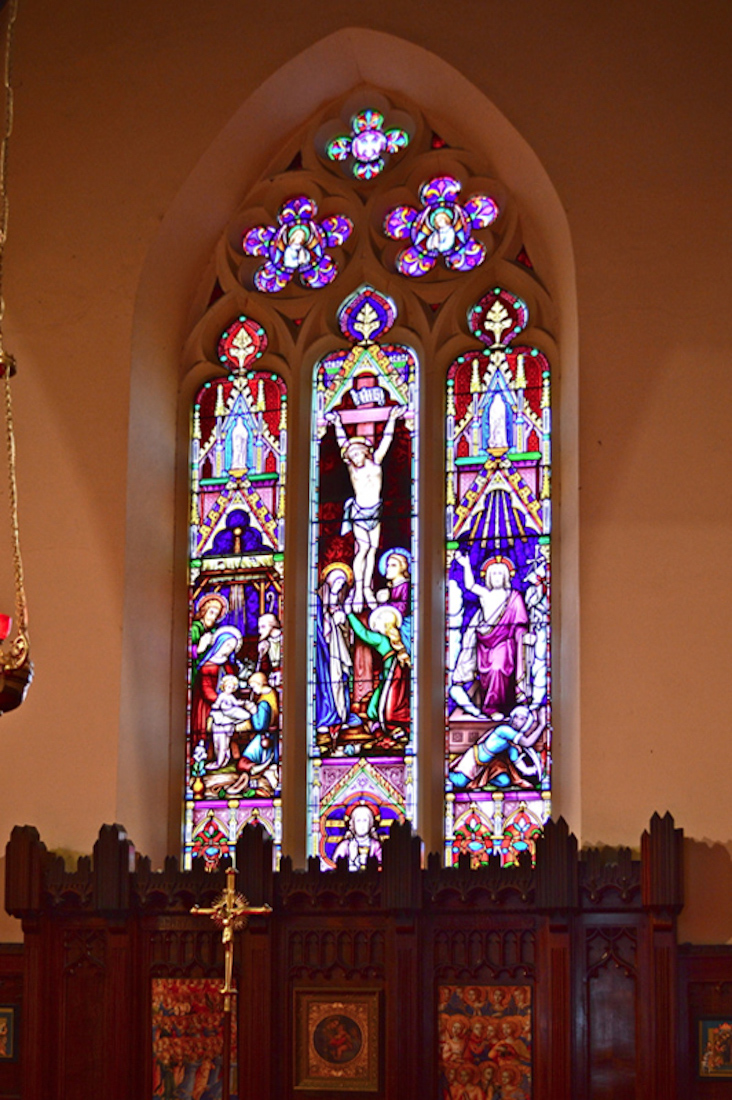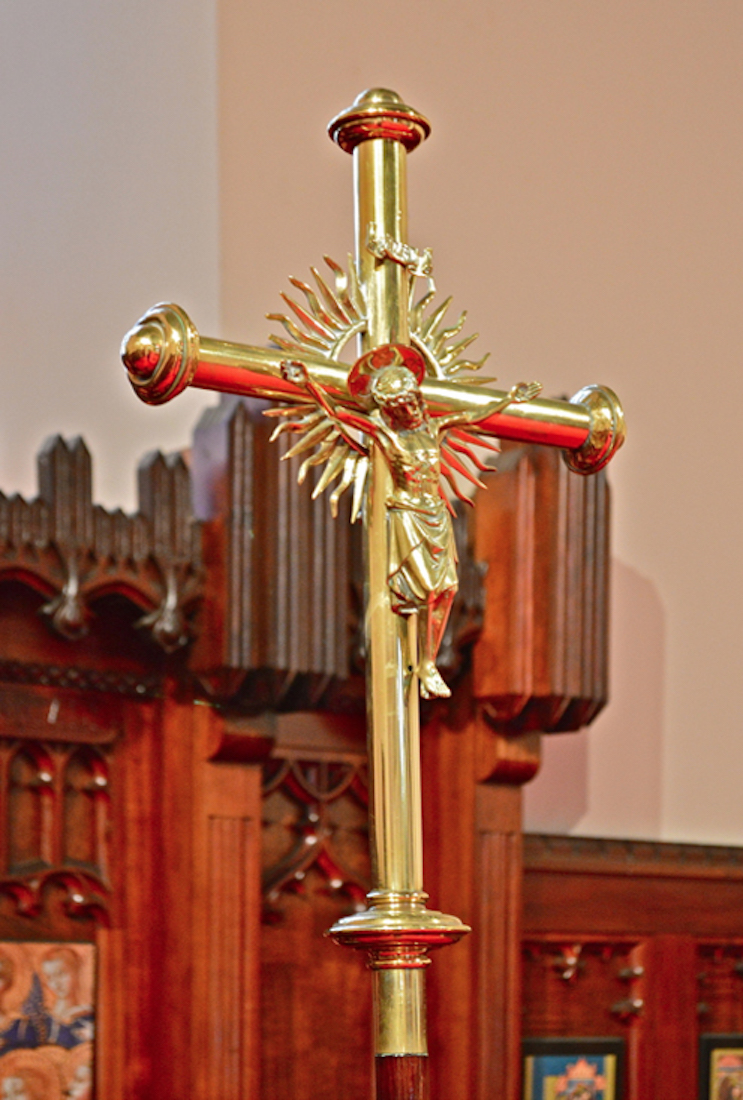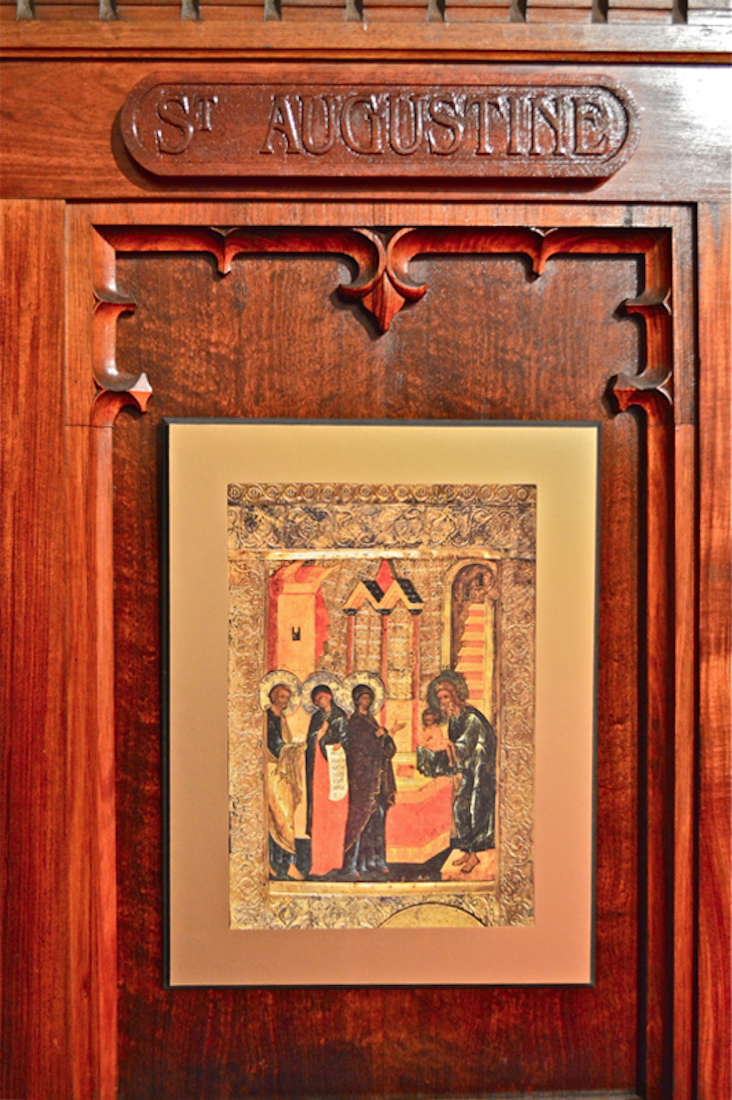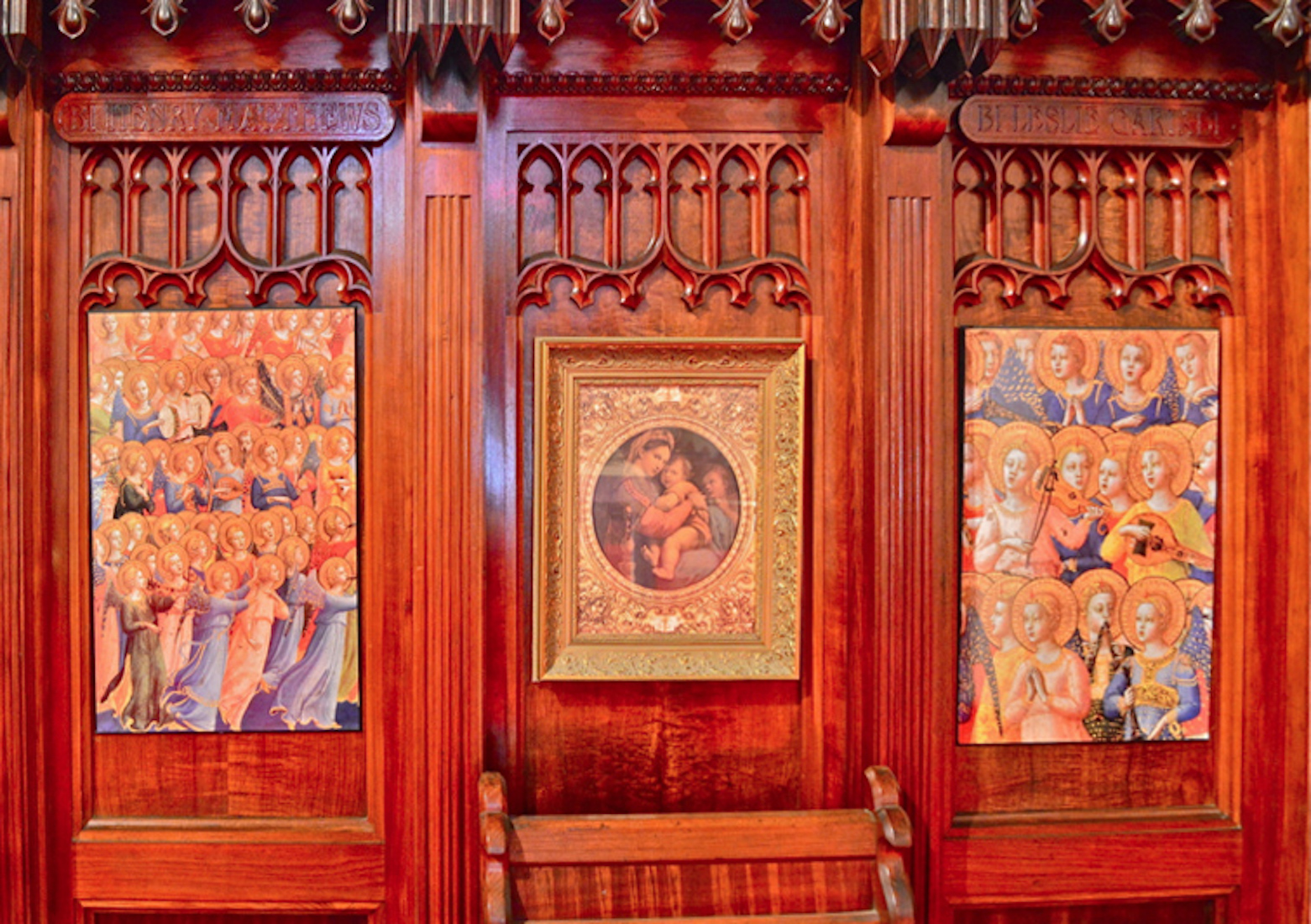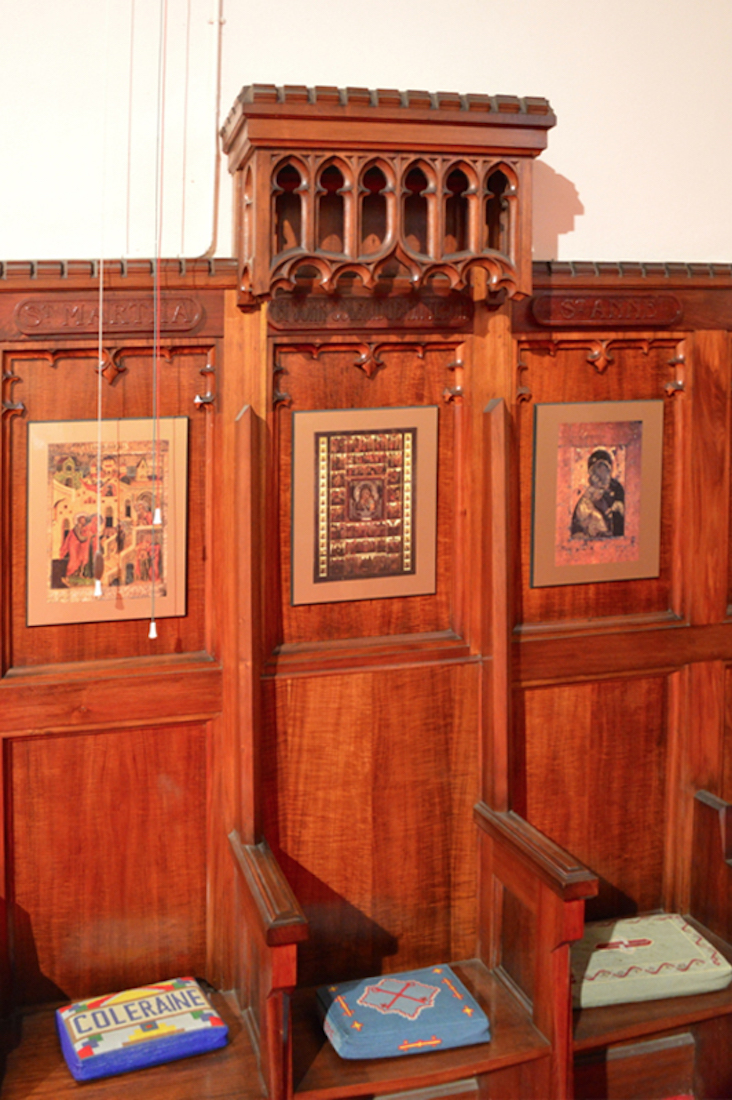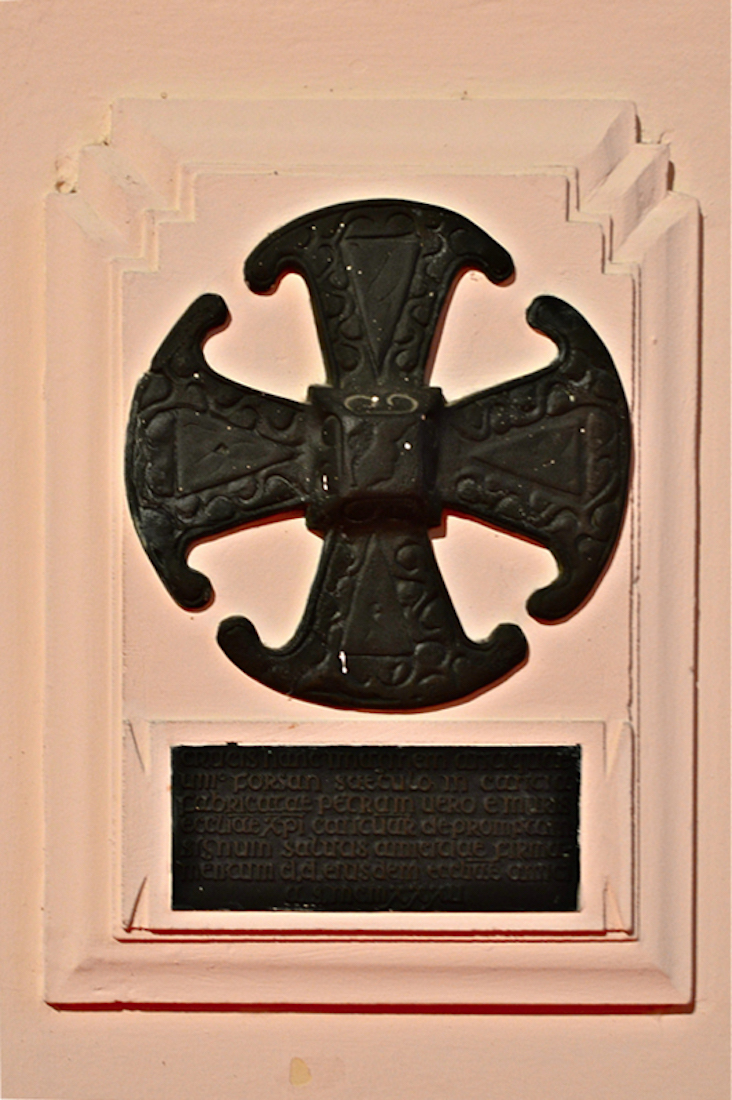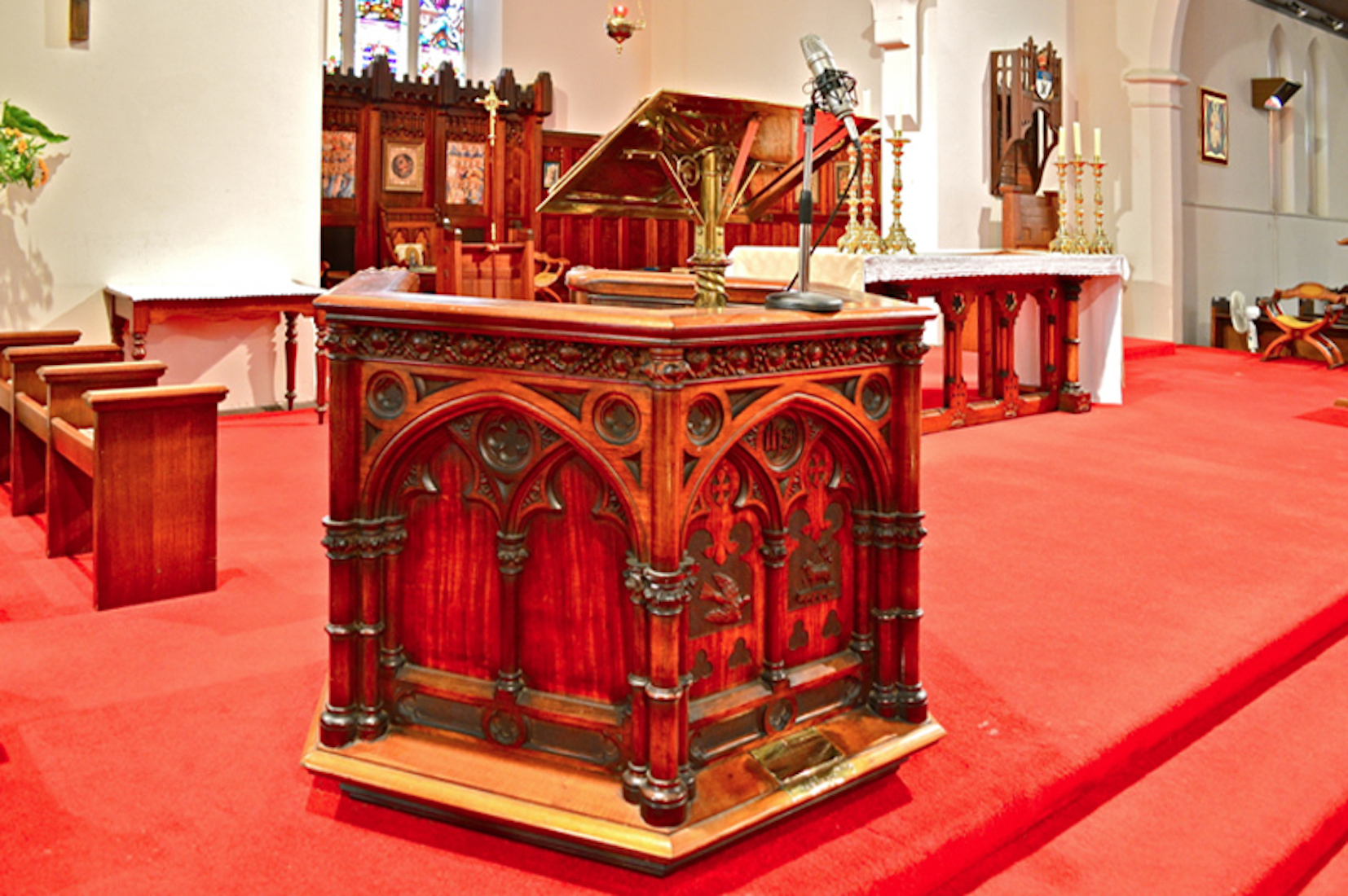
The South transept has been made into the Chapel of the Blessed Virgin Mary (or Lady Chapel). ‘Here the daily cycle of private and public prayer takes place, Mass is celebrated each day, the daily office is recited, confessions are heard, and the faithful find a refuge of peace and prayer surrounded by the love and prayers of Our Most Holy Mother. The Chapel is also the home of a Shrine of our Lady of Walsingham. The Blessed Virgin Mary under this title is the Patroness of our Diocese.’ PLAN
22. ICON
![]()
On the West wall of the Lady Chapel hangs this icon of the crucified Christ. This is the San Damiano Cross – the large Romanesque rood cross that St. Francis of Assisi was praying before when he received the commission from the Lord to rebuild the Church. The original cross hangs in the Basilica of Saint Clare (Basilica di Santa Chiara) in Assisi, Italy. Franciscans cherish this cross as the symbol of their mission from God. The cross is of a type sometimes called an icon cross because besides the main figure it contains images of other saints and people related to the incident of Christ's crucifixion.
23. LADY CHAPEL SIGN
A framed document gives information about the Lady Chapel.
24. LADY CHAPEL WINDOWS
The attractive stained glass windows in the West wall of the South transept. The left window shows St Francis receiving the Stigmata (wounds of Christ). It was given in memory of Tom Dwyer, devoted verger of Christ Church Cathedral for 30 years, who died 7/11/1980. The window at right shows St Nicolas and the pickled children (!). It was the gift of the Christ Church and Ellerslie Ministering Children’s League. The window was originally erected in the porch baptistry, and moved to the Lady Chapel when the front porch was extended. An old tradition tells how St Nicolas saved three boys who were chopped up and pickled by an evil shopkeeper.
25. SHRINE
In the mid 11th Century, the lady of the manor of Walsingham had a vision of Our Lady, and built a replica of the Blessed Virgin’s house at Nazareth. It was a place of pilgrimage until its destruction in 1538 by Henry the Eighth. It was restored in 1922 and is now the focal point of Anglican devotion in Walsingham. Since then countless copies of the Image of Our Lady of Walsingham have been set up in Anglican Cathedrals and Churches throughout the world. The figure of Our Lady and her blessed Son in this chapel is a copy of the image in the Holy House of Walsingham. It was set up and blessed in 1987.
26. SOUTH TRANSEPT WINDOW
The South facing triple lancet windows of the South transept depict scenes from the life of Christ. From left to right we see Jesus the Good Shepherd, Jesus the Ascending Christ, and Jesus Friend of little Children. These windows, some of the earliest in the Cathedral, were the gift of Mrs Martha Rowe in memory of her husband Henry Rowe who died 27/12/1874, and of their son Henry T. P. Rowe who died 16/7/1871.
27. LADY CHAPEL WINDOWS
The lancet pair of ‘In Memorium’ windows on the East wall of the South transept depict St Mary Magdalene (inset Madonna and Child), and St Clare (inset Coronation of the Virgin). Clare of Assisi (1194 – 1253), is an Italian saint and one of the first followers of Saint Francis of Assisi. She founded the Order of Poor Ladies, a monastic religious order for women in the Franciscan tradition, and wrote their Rule of Life – the first monastic rule known to have been written by a woman. Following her death, the order she founded was renamed in her honor as the Order of Saint Clare, commonly referred to today as the Poor Clares. The windows were given in thanksgiving for the work and witness of the Cathedral Ladies’ Guild.
28. ICON
This Icon of the Risen Christ is fixed to the East wall of the South transept. At the top, IC XC are abbreviations (in both Greek and Slavonic) for the name Jesus Christ. In the Eastern Christian tradition, on icons of Christ, there will always be somewhere the IC XC. When a Byzantine Catholic or Orthodox priest gives a blessing, they form the fingers of their right hand into the letters IC XC. Thus the blessing is with the sign of the Cross and in the name of our Lord Jesus Christ.
30. GABLE CRUCIFIX
This large Christus Rex, a stylized depiction of Christ on the Cross, looks down on the congregation from on high above the chancel arch.
31. CATHEDRA
Every Bishop needs a throne! It is the presence of the throne or cathedra in a church which entitles it to be called a cathedral. The decoration at the top carries the Coat of Arms of the Diocese. The wooden panels at the back list past Bishops?
32. CANDLESTICKS
Three golden candlesticks stand at the end of the altar.
33. EAST WINDOW
The large East triple lancet window has three main panels depicting scenes from the life of Christ: the Nativity, the Crucifixion, and the Resurrection. The lower central panel depicts the Institution of the Eucharist.
34. HIGH EAST WINDOW
High up on the Eastern wall is a small window in the shape of a Reuleaux triangle. This features a Crown, alluding to Christ the King.
35. PROCESSIONAL CRUCIFIX
The Processional Crucifix (Cross) ... This is used to lead ceremonial processions on Sundays or special feast days.
36. ST AUGUSTINE PANEL
The sanctuary is lined with mounted prints of scenes from the lives of the Saints. This is a scene from the life of St Augustine.
37. SAINTS PANELS
Three of the panels on the Northern side of the sanctuary. The central painting is of Madonna and Child.
38. PANELS
The outer panels here relate to St Martha and St Anne. Martha and Mary were close to Jesus. Martha is pictured as a woman who was always busy doing practical tasks. St Anne is by tradition the mother of the Virgin Mary.
39. CANTERBURY CROSS
This Canterbury Cross is described as a gift for Cathedrals within the Empire and in the United States of America. It was dedicated by the Archbishop of Canterbury at the Empire Service in Canterbury Cathedral on June 15th 1935. This Cross is a copy of one made perhaps in Kent in the eighth century. It is set in stone taken from the walls of Christ Church Canterbury. As the emblem of Salvation and the earnest of friendship, it was given to the Cathedral by the Friends of Canterbury Cathedral AD 1935. This eighth century “Canterbury Cross”, as it is now called, was discovered some seventy years ago beneath the city streets.
40. LECTERN
The lectern / pulpit (ambo!) is an impressive wooden construction with carved arches.


